This page was first published on the 7th of February, 2015 and last updated on the 24th of August, 2016 by Patrick Carpen.
 Guyanese mostly use cement and cement blocks for construction purposes, and this cement is imported from the comparatively wealthy island of Trinidad. It’s like we have a sworn allegiance to strengthen the Trinidadian economy.
Guyanese mostly use cement and cement blocks for construction purposes, and this cement is imported from the comparatively wealthy island of Trinidad. It’s like we have a sworn allegiance to strengthen the Trinidadian economy.
But why does Guyanese have such a sworn allegiance to strengthen the Trinidadian economy? Is it that the two countries share such strong brotherly ties? While I don’t doubt one bit that Trinidad has been helpful to Guyana in more ways than one, it should be taken into consideration that Guyanese are not given free reign to go to Trinidad and work and return as they please. In fact, I can name more than one instance of Guyanese getting turned back for no substantial reason whatsoever, as soon as he or she had landed at the airport in Trinidad.
Nevertheless, this project will not have its merits in boycotting Trinidad industries, nor does it seek to blow cement and cement blocks completely out of the water. But what it will do though, is give the cement a good run for its money on the basis of the superiority of clay bricks over cement blocks.
The Superiority of Clay Bricks
Clay bricks are better construction material by far than cement blocks in terms of strength, beauty and durability.
Clay Bricks are Cheaper to Produce
With the right machinery and energy sources, clay bricks can be produced on a far more economical basis than cement.
We Need to Exploit Guyana’s Vast Clay Resources
If you ask any Economist, he or she will tell you that Guyana is exploiting way too little of its natural resources. Making use of the clay to aid construction of Guyanese buildings will boost the economy in ways we never thought possible.
We Need To Significantly Increase Guyana’s Gross Domestic Product
It doesn’t take a rocket scientist to tell you that Guyana produces way too little and imports way too much. Why this learned dependency? Why does everyone have to make everything for us and create such a major drain of the Guyanese dollar? Other countries are taking care of themselves when they push their products into our marketplaces. They give us a nice pat on on the back and take our money away. Do these countries care so much about the well being of the Guyanese people that we should allow them to do this? Isn’t it about time we started producing something more for ourselves?
Current Clay Brick Production Operations In Guyana: The Manual Method
I decided to investigate the current state of clay brick productions in Guyana in order to determine a number of factors. On the 23rd of May, 2015, I traveled to the Rupununi Savannas, which lies to the south of Guyana to investigate the current state of clay brick production there. I had been informed earlier that some amount of clay brick production were carried out in that region which is part of the county of Essequibo and borders with Brazil.
After gathering information, I traveled south of Lethem to the village of St. Ignatius. I was directed by locals there of a clay brick production operation going on the open savannas. Using a mountain cycle, I pedaled to the location and met a man heavily immersed in the activity of producing clay bricks by manual or primitive methods.
As I approached, the man greeted me warmly. I learned that he was a native of the neighboring country of Brazil, and did not speak English well. Nevertheless, being fluent in Portuguese, I was able to communicate with him.
He told me that he was employed by a Guyanese man named “Salvador”, who resided in the village of St. Ignatius. He was paid 6 Guyanese dollars for each clay brick he produced and he produced an average of 1000 clay bricks per day, earning GY$6000.00 per day (30 USD).
I am yet to meet Salvador and investigate the marketing potential for clay bricks in the Rupununi.
The pictures below shed some light on the clay brick production operations in Guyana. More will be added later.
Note: The time lapse between casting the clay and outputting the blocks is “less than two minutes”.
Up Next: Industrial Machines – The Future of Clay Brick Production In Guyana.
Project Coordinator: Patrick Carpen
Marketing Director: —
Estimated Cost: US$1000,000.00
Project Status: Underway
Investment Opportunity: Please contact Patrick Carpen if you wish to invest in this project.

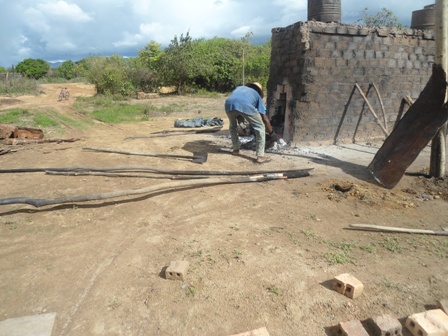
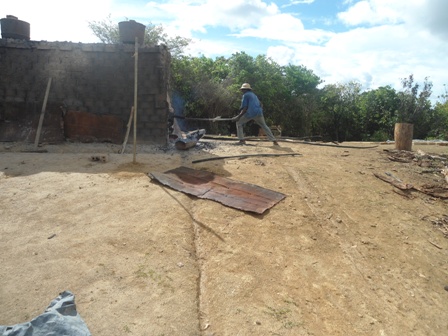
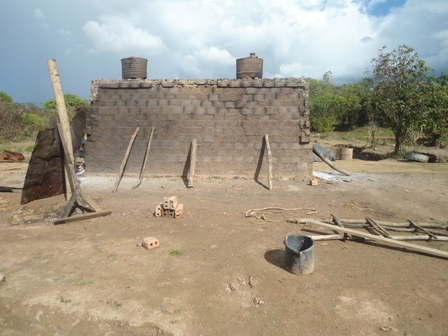
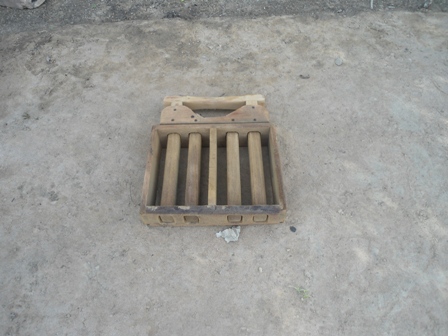








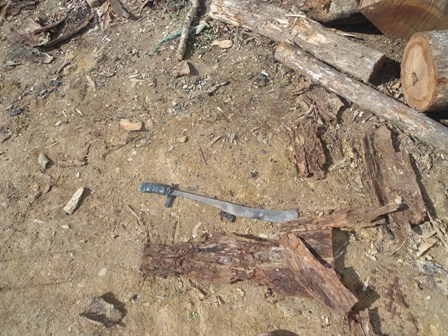
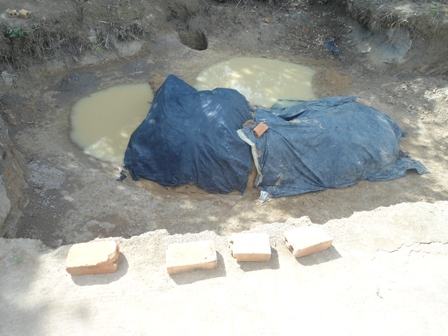

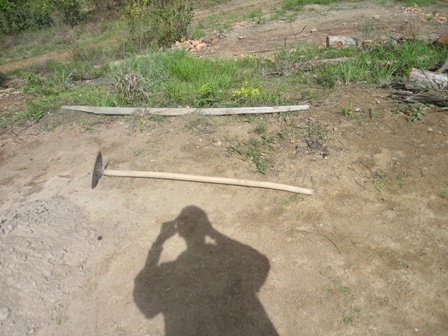
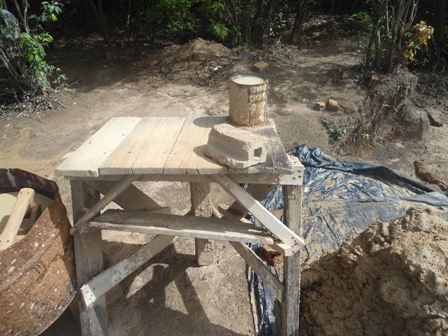
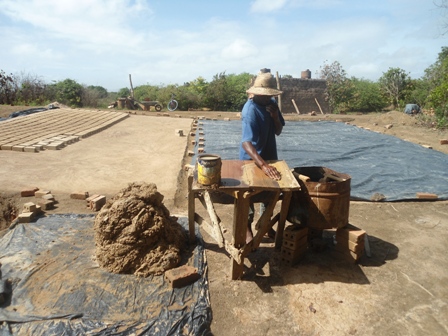

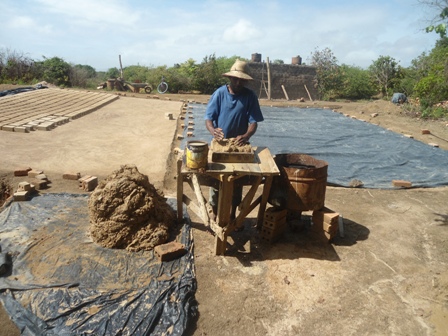

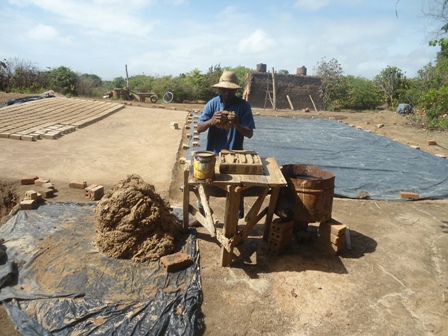
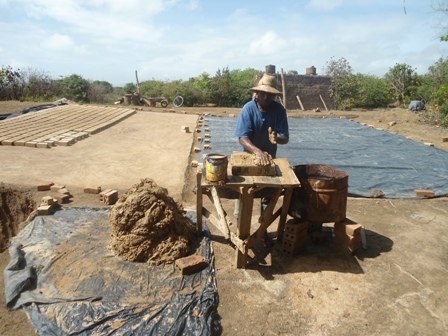

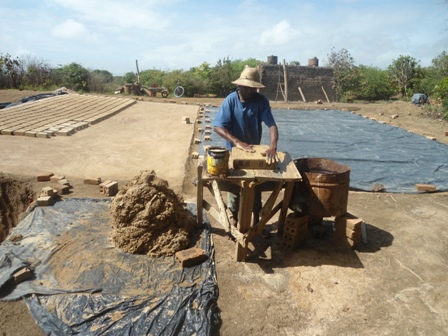


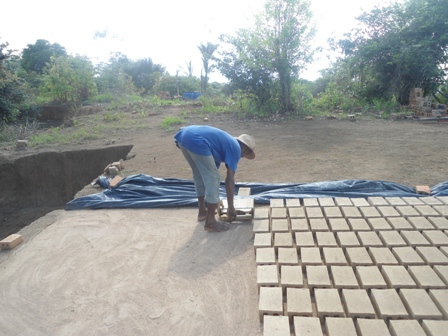


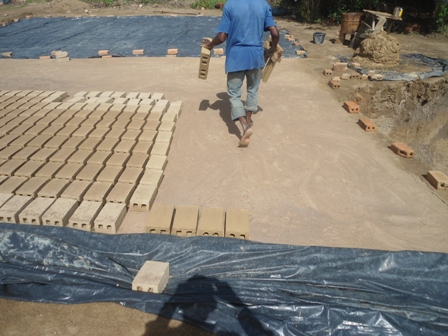




Thanks for this useful info. I am interested to know if there are clay deposits in other regions, particularly region one and two?
Regards
Dr Nazim Baluch
Faculty Member
Universiti Utara Malaysia
i love clay brick to build house ,it is more durable and costly to produce in Guyana,my future home will be built from clay brick
Thank you for the information. Is clay brick available in region 3